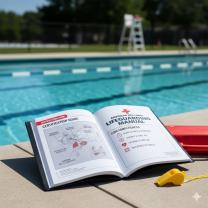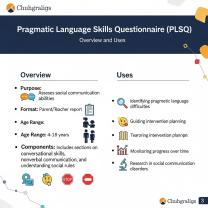How do teachers get a classroom grant?
Securing classroom grants can be a valuable way for teachers to obtain funding for projects, supplies, and educational initiatives. Here's a step-by-step guide on how teachers can pursue and secure classroom grants:
Identify Funding Sources:
- Begin by identifying potential grant sources. These can include government agencies, private foundations, corporations, non-profit organizations, and local community organizations. Look for grants that align with your specific classroom needs or projects.
Research Grant Opportunities:
- Conduct thorough research to find grants that match your goals. Websites, grant databases, and educational organizations often provide information about available grants. Look for grants with eligibility criteria that you meet.
Read Guidelines Carefully:
- Once you've identified potential grants, carefully read the guidelines and requirements for each grant. Pay attention to eligibility criteria, application deadlines, required documentation, and any restrictions.
Plan Your Project:
- Develop a clear and compelling project proposal or plan. Outline the objectives, expected outcomes, budget, timeline, and the impact of your project on students' learning. Ensure that your proposal aligns with the grant's objectives and priorities.
Gather Necessary Documents:
- Collect all the documents and information required for the grant application. This may include your resume, letters of support, project budget, and a detailed description of how the grant funds will be used.
Write a Persuasive Proposal:
- Craft a well-written and persuasive grant proposal. Be concise and address the grant's specific criteria and objectives. Explain how your project will benefit students and the community.
Seek Letters of Support:
- If required, obtain letters of support from school administrators, colleagues, or community members who can attest to the value and impact of your project. These letters can strengthen your application.
Prepare a Budget:
- Create a detailed budget that outlines how you will use the grant funds. Be clear about how each expense relates to the project's objectives. Ensure that your budget is realistic and aligns with the grant guidelines.
Submit the Application:
- Complete the grant application form as instructed in the grant guidelines. Ensure that you provide all the necessary information and documents. Pay attention to submission deadlines.
Follow-Up and Monitor:
- After submitting your application, follow up with the grant organization if necessary. Keep track of the status of your application and be prepared to provide any additional information if requested.
Express Gratitude:
- If you receive a grant, be sure to express your gratitude to the funding organization. Consider sending thank-you notes or letters and sharing updates on the progress of your project.
Implement and Report:
- Once you secure the grant, implement your project as planned. Keep detailed records of how the funds are used and the impact on your students. Most grants require some form of reporting or evaluation, so be prepared to provide this information.
Seek Continuous Opportunities:
- Continue to search for and apply for additional grants as needed. Grant funding can support various aspects of classroom instruction and enrichment.
Remember that the grant application process can be competitive, so it's essential to submit a well-prepared proposal that clearly demonstrates the need for funding and the potential positive outcomes. Persistence, careful planning, and a commitment to your students' education can increase your chances of securing classroom grants.
The three titles you have provided highlight the importance of classroom grant opportunities for teachers. Classroom grants can provide teachers with the resources they need to implement innovative and engaging learning experiences for their students.
The Insider's Guide to Classroom Grant Opportunities for Teachers
This title emphasizes the fact that there are many classroom grant opportunities available for teachers. With a little research, teachers can find grants that are aligned with their teaching goals and the needs of their students.
Securing Funding for Educational Projects: How Teachers Can Get Grants
This title highlights the steps that teachers can take to secure funding for their educational projects. These steps include identifying their needs, finding the right grants, writing a strong proposal, and submitting their application on time.
Making a Difference in Education: Steps to Access Classroom Grants
This title emphasizes the positive impact that classroom grants can have on education. Classroom grants can help teachers to provide their students with the resources they need to succeed.
Here are some tips for finding and applying for classroom grants:
- Identify your needs. What resources do you need to implement your educational projects? Once you have identified your needs, you can start to look for grants that match your needs.
- Find the right grants. There are many different types of classroom grants available. Some grants are specific to certain subject areas, while others are open to all teachers. You can find classroom grants by searching online, contacting your local school district, or reaching out to educational organizations.
- Write a strong proposal. Your grant proposal should clearly explain your educational project, why it is important, and how you will use the grant money to implement it. Be sure to follow the grant application guidelines carefully.
- Submit your application on time. Most grant applications have deadlines. Be sure to submit your application on time or before the deadline.
Applying for classroom grants can be a time-consuming process, but it is worth it in the end. Classroom grants can provide teachers with the resources they need to make a difference in the lives of their students.
Here are some additional tips for increasing your chances of winning a classroom grant:
- Get your students involved. Students can help you to brainstorm ideas for your educational projects and to write your grant proposal. Getting your students involved in the grant process can also help to generate excitement and support for your project.
- Collaborate with other teachers. You can increase your chances of winning a grant by collaborating with other teachers. You can work together to develop a joint project or to write a more comprehensive grant proposal.
- Be persistent. Don't give up if you don't win a grant on your first try. Keep applying for grants until you are successful.
Classroom grants can be a valuable resource for teachers. By following the tips above, teachers can increase their chances of finding and winning classroom grants that will support their educational projects and benefit their students.












